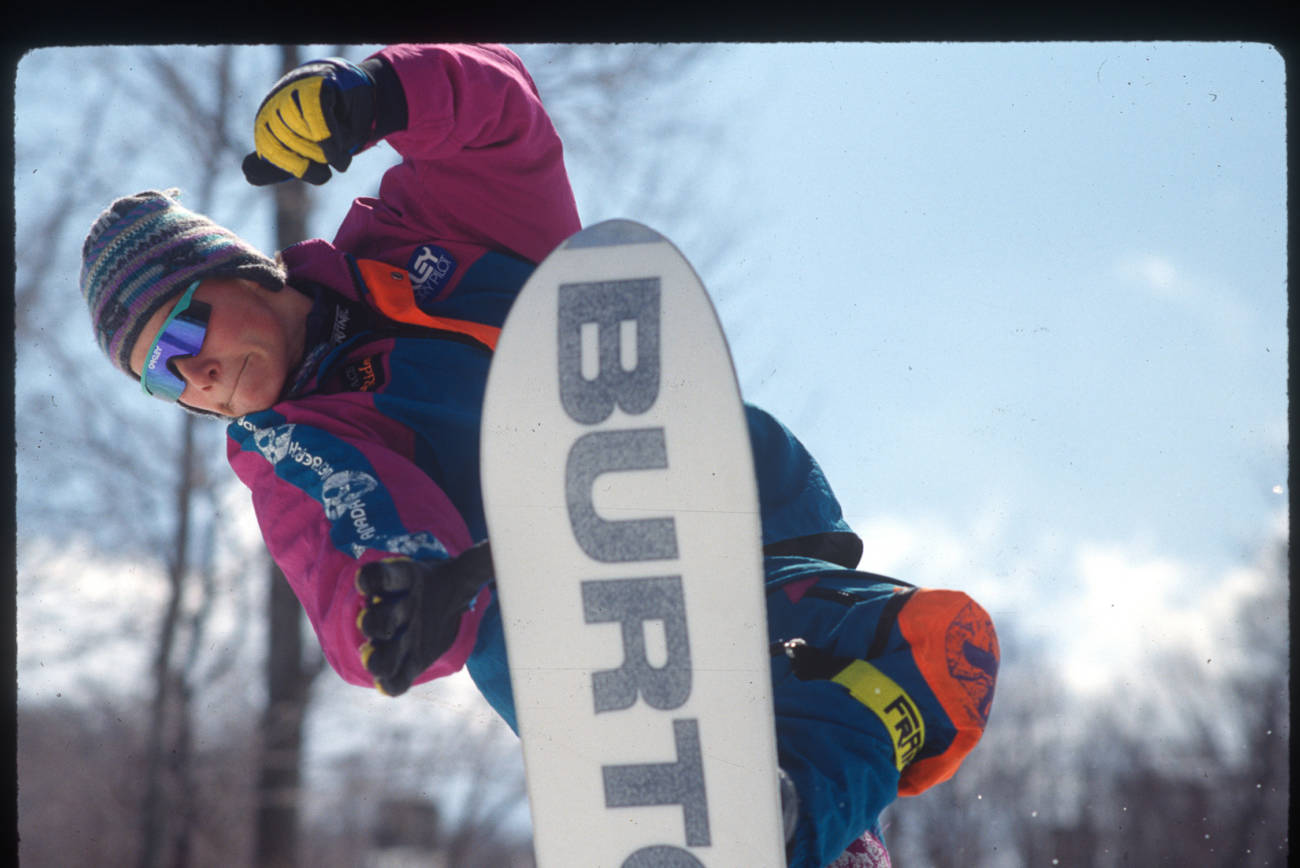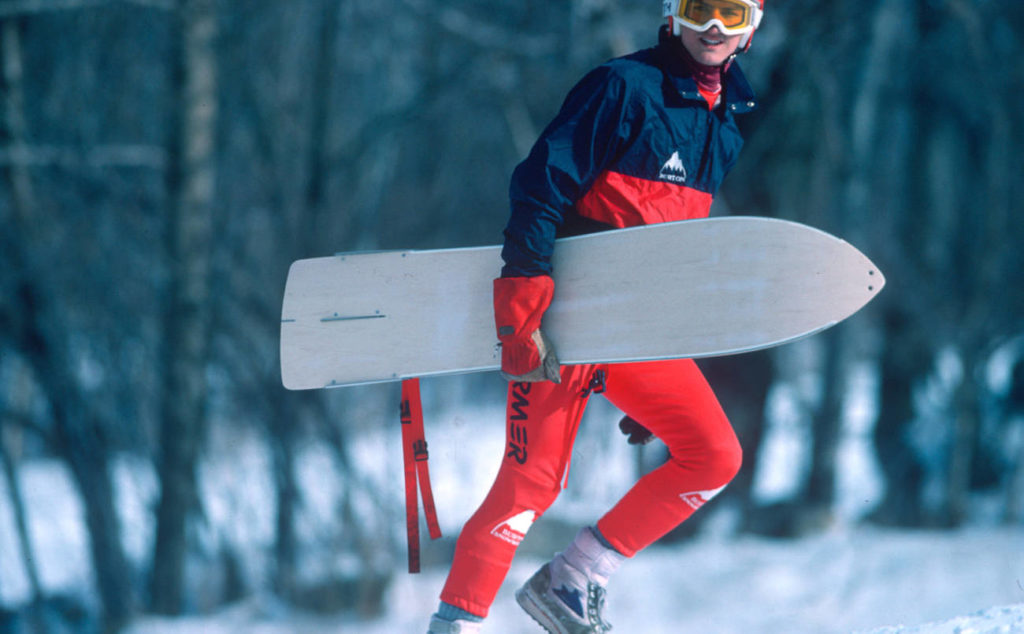
Three gold, one silver and a bronze. “What are the Olympic snowboarding medals won so far by Stratton athletes, Alex?”
After winning silver in Torino, and dominating X-Games and World Cup SBX competition, Lindsey Jacobellis continued to set records with her individual gold medal in Bejing. It was the first gold of the games for Team USA. She was the oldest American woman to win a medal in any sport, of any color, in any Olympics, until Elana Meyers Taylor (just a year older) broke that record a week later.
She was also one of only five US athletes competing in a fifth winter Olympics. That experience paid off as she went on to win her second gold of the 2022 Games in the first ever mixed team boardercross with 40-year-old Nick Baumgartner, making her the only American snowboarder to win two gold medals in a single Olympics.
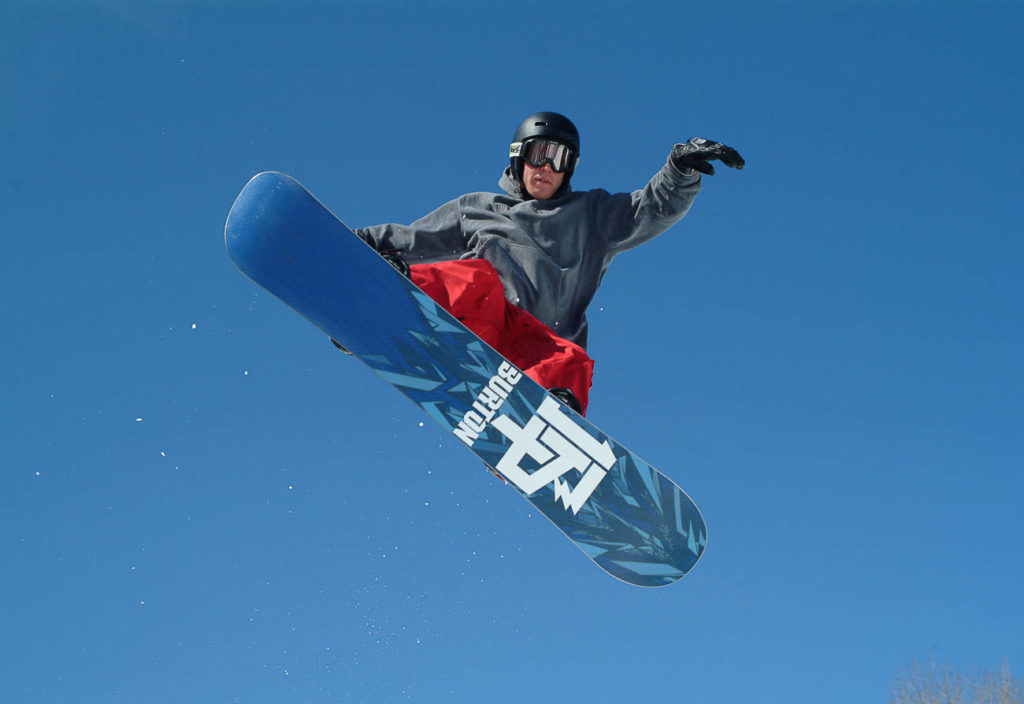
The first gold came home with Ross Powers in 2002 after a record-setting halfpipe run. He also earned bronze when snowboarding made its ‘98 Olympic debut in Nagano; that was the year three Stratton riders were named to the first US Olympic team and a Mammoth Grand Prix announcer asked, “what’s in the water at Stratton?”
More like the snow. And the legacy. Stratton was the first major resort to welcome snowboarding, is home to the first snowboard school, and has raised a veritable Who’s Who of riders.
Long before 11-year-old Lindsey Jacobellis was racing in the Night Rider series on Tyrolienne, beating all the boys in boardercross, Jake Burton Carpenter was testing his boards on Suntanner after a night of bartending at the Birkenhaus, the Stratton inn owned by Ski School Director Emo Heinrich.
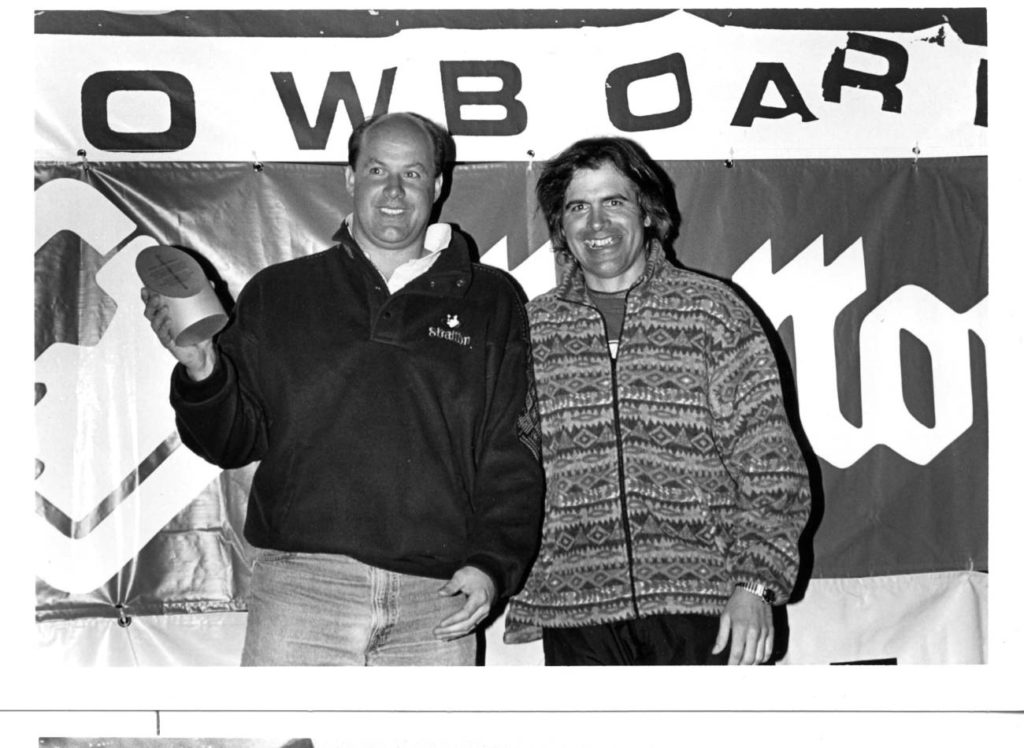
The sport was taking off all while “Burton boarding” was relegated to back hills and golf courses. Stratton Vice President of Mountain Operations Paul Johnston took notice, and asked Jake to bring up some boards so management could give it a try. No one made it to the bottom, and “no one liked it,” he said. But Johnston recognized the potential and tapped into the passion. “It was a bumpy road for a while, the first year was hard, but we made the right decision.”
That was 1983. Snowboarders had to be certified to ride the lifts by showing they could turn. And stop. And that was just for the lower mountain. Upper mountain certification required a second skill test.
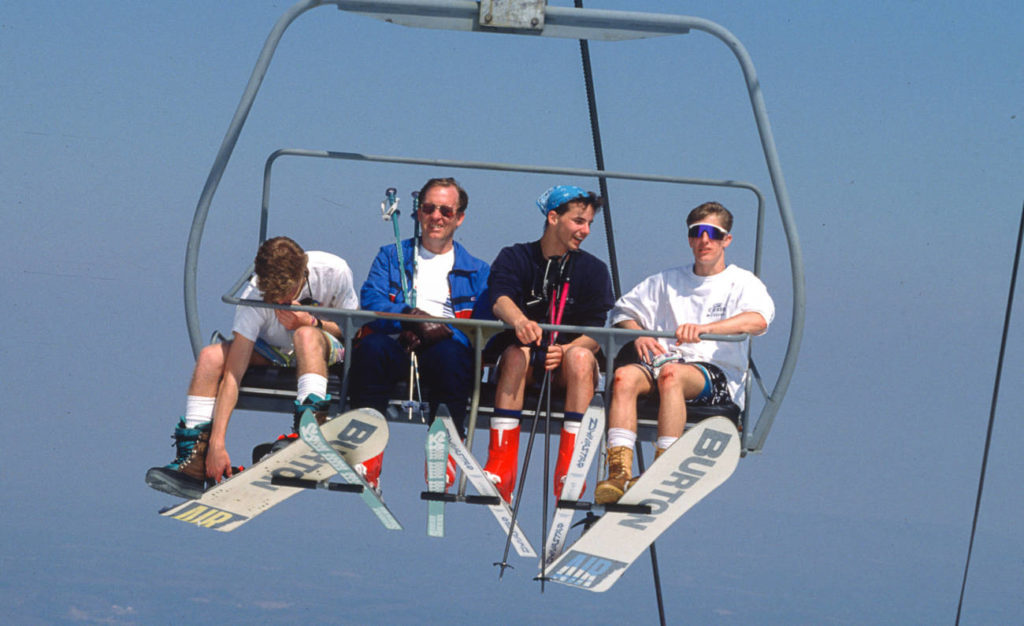
Jake built a supply of rental boards for Stratton. Mark Heingartner and his Burton teammates started the world’s first snowboard school. Soon, there would be 50 beginner snowboard lessons to 10 ski lessons, Johnston recalls in a video recorded for his 2018 induction into the Vermont Ski and Snowboard Hall of Fame.
In 1985, Johnston invited Burton to bring his National Championships from Snow Valley to Stratton, where it would become the US Open and live for 30 years. At first, it was all racing, like skiing gates except in Sorel boots. Until 1988, when Johnston decided to make enough snow for a halfpipe, raising finance eyebrows, and had Londonderry’s Lyle Blaisdell dig out the 14-foot walls with an excavator.
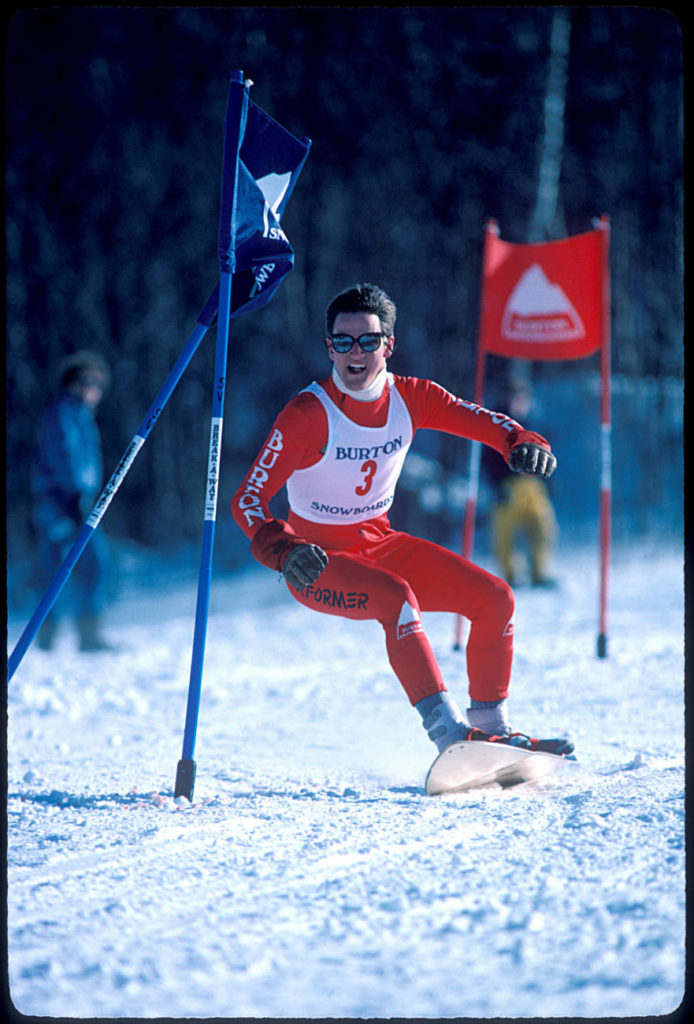
Most of the world didn’t even know what a halfpipe was, and no one expected that one day you’d see a pair of triple corks in a single run, or a switch backside 1260 into a 1440. Or that pipe walls would rise to 22 feet, 64 feet apart, launching the sky-high amplitude we saw in Bejing.
And as far back as 2002, when Powers opened his gold medal winning run with a 21-foot method that set a new standard. It’s now considered part of the “Powers Playbook,” or so Todd Richards said in announcing this year’s Olympic halfpipe finals.
It was 1988 when Time magazine called snowboarding “the worst new sport.” It was already five years “old” at Stratton, and would become an Olympic medal event in just 10 more.
During the 1992 US Open awards ceremony in the Bear’s Den, Jake Burton presented a trophy to Paul Johnston with his gratitude: “By opening the lifts and trails of Stratton to snowboarders, you opened the hearts and minds of the world to a sport that knows no bounds.”
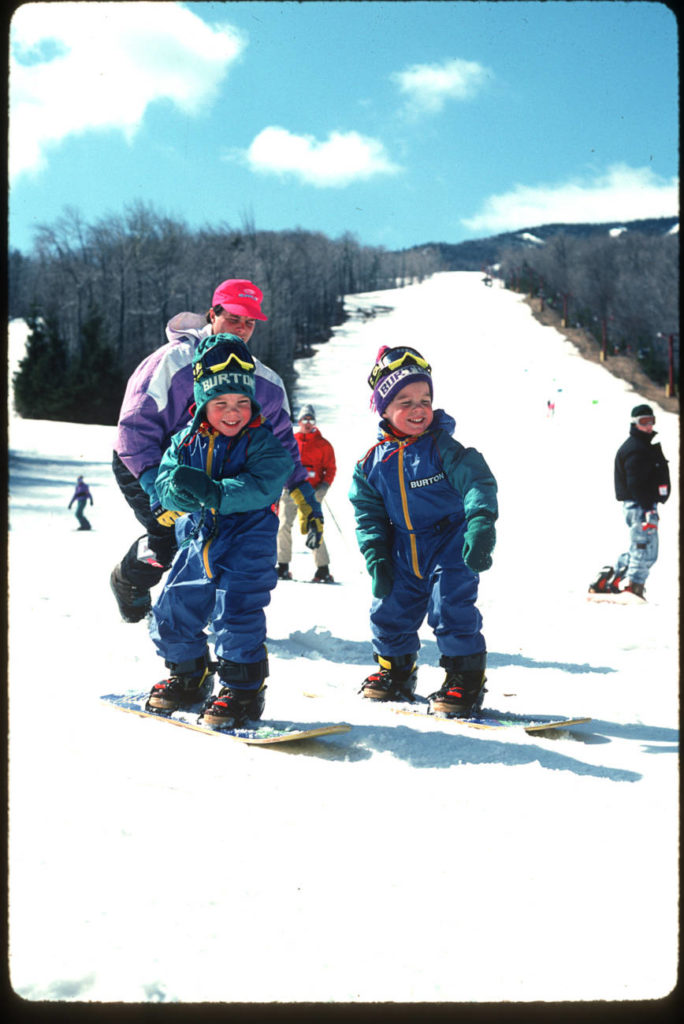
The number of snowboarders grew exponentially through the ‘90s and into the new millennium with 7.9 million participants in the United States alone in 2019-20, according to the latest Snowsports Industries America (SIA) report.
Today, the snowboard equipment market is valued at $503.48 million US and all but three resorts welcome snowboarders. Television networks air snowboard competitions in prime time.
Once labeled “hoodlums and thugs,” Johnston said of the early years, snowboarders now score million-dollar sponsorship deals. Shaun White is widely reported to be the wealthiest among them with a net worth of $60 million. Who else remembers that red-headed grom dropping in to forerun the US Open halfpipe contest that Terje Haakonsen won with an air to fakie?
It’s been quite a ride over the last 40 years. Here at Stratton, and around the globe, as generations of winter sports enthusiasts share the stoke, and the slopes. Thanks in no small part to one big, bold decision.
London journalist Sam Haddad traveled to Stratton in 2010, and here’s a quote from her story in the Guardian newspaper:
“Today, snowboarders are such a ubiquitous sight on the slopes, it’s hard to imagine there was ever a time when they were universally banned, not to mention ridiculed as renegade punks who wore too much fluoro. Those of us who get our kicks from riding sideways through the snow have a lot to thank Stratton Mountain for. In 1983 the Vermont resort became the first to allow snowboarders on its slopes, and in doing so catapulted the sport towards its modern-day incarnation. Skiers have Wengen, surfers have Santa Cruz, and we have Stratton.”
Be sure to check out the young riders and legends of the sport here at Stratton from March 12-13 as the Vermont Open presents the 2022 Banked Slalom.
Published March 1, 2022 by Myra Foster
